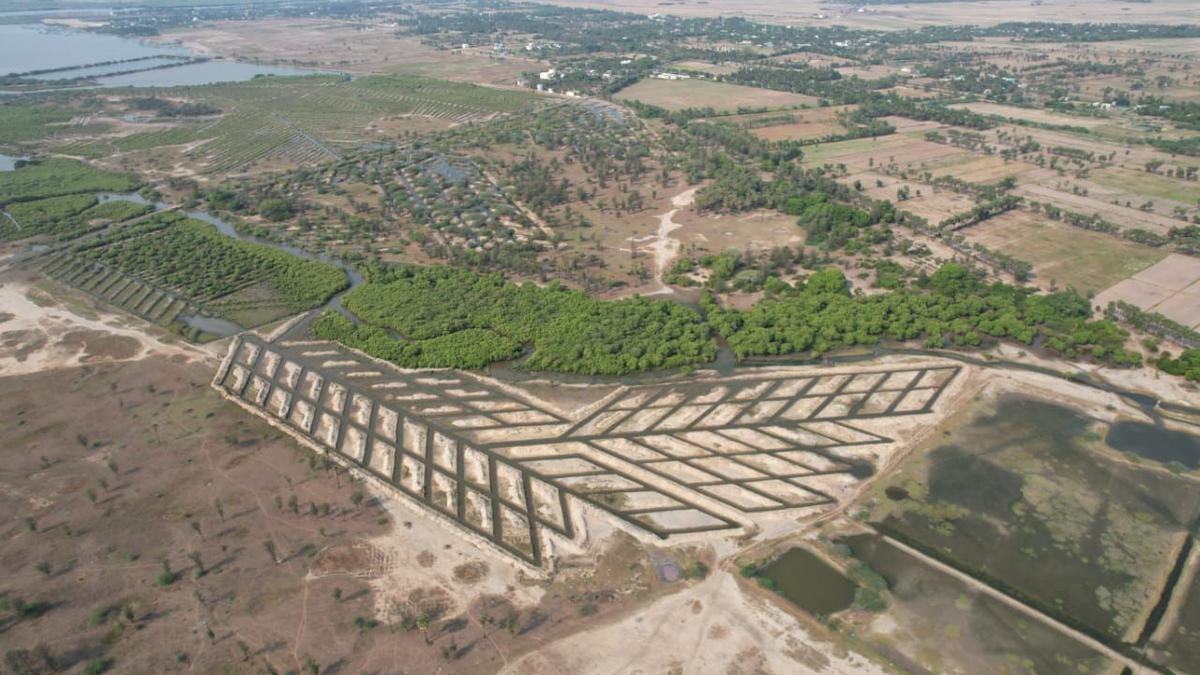
T.N. Forest Department to scale up mangrove cover in Pichavaram by 100 hectares in 2023-24
The Hindu
The Tamil Nadu Forest Department has drawn up a comprehensive plan for the rehabilitation of coastal habitats by creating bio-shields, and restoring degraded mangroves in Cuddalore district. The Department has planned to restore degraded areas in Pichavaram, and increase mangrove cover in the region by 100 hectares for the year 2023-24.
The Tamil Nadu Forest Department has drawn up a comprehensive plan for the rehabilitation of coastal habitats by creating bio-shields, and restoring degraded mangroves in Cuddalore district. The Department has planned to restore degraded areas in Pichavaram, and increase mangrove cover in the region by 100 hectares for the year 2023-24.
The Pichavaram mangroves are among the most productive ecosystems in the State, and are a storehouse of biodiversity, supporting 840 species of flora and fauna. These includes 115 species of birds, 16 species of mammals, 11 amphibians, 177 species of finfish, 95 species of zooplanktons, 82 phytoplanktons, 35 species of butterflies, 17 snakes and 3 species of seagrass.
However, the mangroves are under serious threat of degradation due to various factors. Realising this, the Forest Department has planned the restoration of about 350 hectares of degraded patches in Pichavaram over the next three years.
Official sources said the scheme for rehabilitation of coastal habitats and creation of bio-shields is being implemented in all coastal districts, and a major portion of the work would be taken up in Killai and Pichavaram under the Green Tamil Nadu Mission.
The micro plan has been approved by the District Green Committee/Wetlands Committee headed by Collector A. Arun Thamburaj and sent to the State Government. New mangrove plantations will be taken up in the Uppanar River in Kudikadu village on an expanse of 25 hectares in two locations during 2023-24.
According to government estimates, the mangrove cover in Tamil Nadu is 44.94 square kilometres (sq km), out of which 7.73 sq km fall in Cuddalore. Straddling the Vellar and Coleroon estuaries, about 21% of Pichavaram is occupied by waterbodies, 27% by healthy mangrove vegetation, 38% by mudflats with sparsely grown mangroves, and the rest of the area is sand dunes.
According to Villupuram District Forest Officer (DFO) Sumesh Soman who holds additional charge of Cuddalore district, “As many as 13 species of mangroves are found in Pichavaram. Of these, there are only a few individuals of species like Lumnitzera racemosa and Rhizophora annamalayana. The degradation of mangroves usually occurs as a result of high soil salinity due to irregular flushing and low tidal amplitude. The Department has planned to regenerate these two species by using scientific methods such as the canal bank planting by modified fishbone design.”











